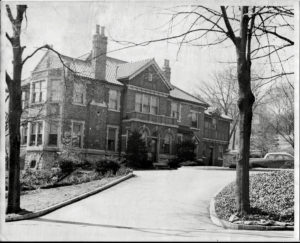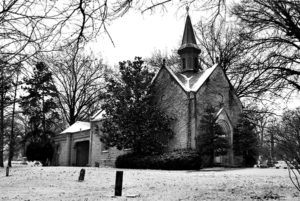OUR STORY
ROLLING HILLS THAT ARE RICH IN HISTORY
Members of the German Evangelical Reform Churches of St. Peter and St. Paul of Cincinnati originally founded the cemetery in 1849. On February 26, 1850 the first land for the cemetery was purchased from Samuel West for $9,000. The first holding vaults were constructed in 1850 and the first burial took place in the winter of 1851. The only building that stood on the grounds was a 2-room frame house near the original gate. This house later grew into a 14-room home for the sexton and his family. The structure had both an office and a bell tower.
During the 1870’s, all of the graves that had been next to St. Peter’s Church at 3001 Queen City Ave, were relocated to the then established, German Evangelical Protestant Cemetery. These reinternments were placed on the grounds which now surround the German Chapel “Kappell”, in the center of the cemetery.
In August of 1882, additional land was purchased from F. Feldman and Samuel West. This land is where you can now find the main entrance and administration building. It was not until 1884 that George and August Brink designed and constructed the “Kappell”. The Brinks, German-American architects and builders, built the Chapel and breezeway using the Neo-Romanesque style which became prevalent during the mid-19th century. This Romanesque Revival style was inspired by the 11th and 12 century Romanesque architecture found in Europe. Rundbogenstil, also referred to as a “round-arched style”, was popular in Germany in the 1830’s.
The cemetery was originally known as the German Evangelical Protestant Cemetery which was then shortened to Carthage Road Cemetery. In 1896, the suburb of Clifton was annexed by the City of Cincinnati and Carthage Road north of Glenmary Avenue was renamed to Vine Street.
Four generations of the Dahmann family served as superintendents of the Cemetery from 1879 until the 1950’s. Their original residence was located in what is now the Mueller Heights area. This building was demolished shortly after the current administration building was constructed in 1930. There is one remnant of the Dahmann residence, a bell, which is still located in the cemetery. The bell would ring 3 times to alert the grave diggers that a funeral party was approaching. The bell was also used to signal meals or even alert staff to other emergencies. To commemorate the Dahmann family’s years of service, a large boulder “Dahmann Rock” was placed in Section 25.
The current administration building was built in 1930 and served as the superintendent’s residence until the 1980’s. The 20-room building is full of historic character and charm.


Additional land was purchased in the 1940’s which makes up our north hill. This land was previously known as “Dietze Basin” which was a holding area for the No. 2 Erie Canal. This land is now home to Veterans Hill, Garden of Vistas and sections 24-28. In 1954 a maintenance building was constructed in this area.

In the 1960’s the second entrance was added off of Mitchell Avenue. There is an inscribed boulder “Mehring Memorial Drive” located just inside the Mitchell Avenue gate for Lieutenant Art Mehring. Mehring was the first person in the Cincinnati area to do helicopter traffic reports for WLW radio. He would often land his helicopter in section 27 of the cemetery and observe traffic on I-75.
On February 28, 2008 the German Evangelical Protestant Cemetery Chapel was named to the National Register of Historic Places. Although the chapel’s craftsmanship has allowed it to stand the test of time, some of the architectural details are in need of restoration. We are working on a capital investment campaign plan to preserve and restore these areas of the chapel so it can be enjoyed by future generations.
